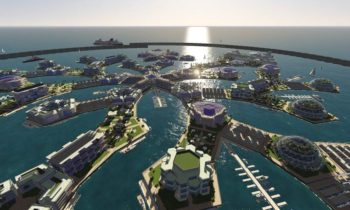 Researchers from Norway and Singapore are working together to build new cities floating at sea and six stories underneath the ground. Lack of space has provoked this initiative from Asian developers, and the technological experience with floating constructions in Norway comes in handy.
Researchers from Norway and Singapore are working together to build new cities floating at sea and six stories underneath the ground. Lack of space has provoked this initiative from Asian developers, and the technological experience with floating constructions in Norway comes in handy.
“Norway has a leading edge in floating constructions, but also in underground technology. It’s been a long time since we started storing oil and gas below the ground,” says Øyvind Hellan, research manager for SINTEF Ocean.
Not enough space onshore
The cooperation with Singapore goes back to 2004, when SINTEF and NTNU were contacted about underground storage of oil and gas. Gradually, the cooperation has developed to include floating constructions, where the idea is to exploit the sea surface for a number of purposes, from manufacturing industry to housing. Singapore and Norway are both similar and different. The similarity is that both countries have around the same number of inhabitants. The difference is that Norway’s land area is 1500 times larger.
“We want to exploit sea, land and air to a much greater extent than we do today, both for housing, manufacturing and transport purposes. We have already prepared a plan for how we can use the subsurface to a greater extent,” says the initiator of the cooperation, professor C.M Wang from the University of Queensland.
Six stories have been planned underground, where the top layer will be used for shops, and the lower layers for car traffic, trains, parking, water storage and military facilities. Wang and a delegation from Singapore recently met with the researchers from Norway. They went on a tour to see Western Norway and the mainland connection Krifast, where they inspected floating bridges, and SINTEF Ocean’s laboratories at Tyholt.
Great plans in French Polynesia
A company from Silicon Valley also took part in the seminar in Trondheim. They already have specific building plans, but not in Singapore. “French Polynesia wants to build floating cities. They fear that its islands could be hit by rising sea levels,” says Egor Rujikov, ambassador for Seasteding Institute.
French Polynesia consists of five groups of islands, comprising 121 islands in all, of which 76 are inhabited. The government is working to develop regulations which can allow residential settlements floating at sea. Rujikov has received indications that building can start within a short period of time.
“Few technical limitations”
“We expect to set the first modules afloat during 2018. They will be 50 x 50 metres in size. The idea is to make these floating communities as self-supporting as possible, when it comes to water, energy and food,” Rujikov says.
“This is a good example of success in international cooperation. Now, we hope that more Asian countries can make use of this knowledge,” concludes Øyvind Hellan at SINTEF.
(sintef, maritime-executive )
